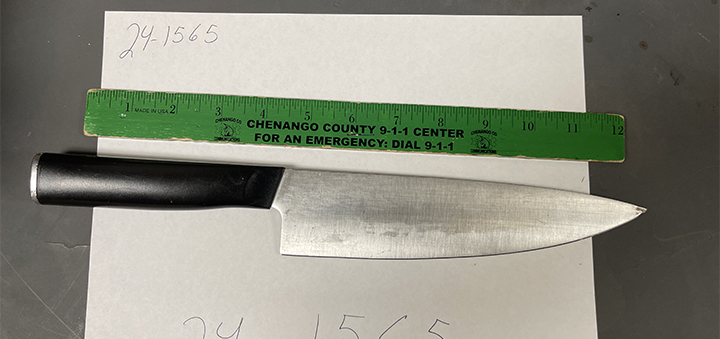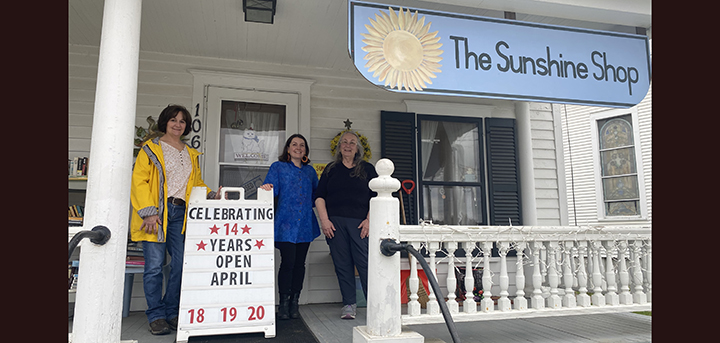Embrace Our Local Agriculture
Published:
March 13th, 2019
By:
Joe Angelino
We are right in the middle of National Agriculture week, which runs from March 10 – 16, with tomorrow March 14 being National Agriculture Day. A blind man can see everyone’s life in rural Chenango County is better when there are more farmers in the area. The more agriculture in Central New York, the more there is ‘agri-business’ spin-offs employing others. People working in everything from banking, to fuel, to tractors, to fertilizer all revolves around the industry of agriculture.
Information from the Agriculture Council of America indicates each individual American farmer feeds about 165 people, which is way up from the 25 people fed per farmer in the 1960s. The people eating American food are all over the world, with large amounts exported to China. Here in Chenango County we can boast one of the largest agriculture employers, Chobani making protein rich Greek yogurt right in our backyard. Single-serving containers filled at the plant in Columbus, NY travel all over North America. In return, dollars travel back here as payroll and corporate investments.
Agriculture is still a large part of our local economy, and this isn’t just about dairy cows, but a plethora of other crops and products which we eat, and wear and even use as fuel or furniture. By now we are all used to seeing Chobani on store shelves far and wide, but my excitement erupted when I first saw locally made Kutik’s Honey in a Wegman’s grocery store far from home. People around me could not have cared less, but I told them anyhow; “this honey is from my hometown!”
Let’s not forget about another industry which locally employees hundreds; logging and timber. These folks are seldom seen because their hard – and dangerous – work takes place out of sight, deep in the woods. What we do see from their labors are the loaded log trucks traveling to saw mills and the construction-ready lumber at retail stores. The long legacy of the logger is our stick built homes filled with hardwood heirloom furniture.
Another overlooked agri-business is that of florist and greenhouses. If you don’t think this product is a sales tax generator, you should watch the traffic in and out at Pires Flower Basket on Valentine’s Day, Easter, Christmas-time and the countless individual birthdays.
As a consumer, we need to support all the agri-business we can by shopping and buying local products. The past few years have been tough for our agricultural neighbors, particularly dairy families. We can help them, and ourselves, by drinking more milk and eating more dairy products. Other agri-businesses have been thwarted by on-going international trade issues which hopefully can be settled by our federal officials. Local elected politicians should help ease some burden with the onerous property taxes which deliver little in the way of services to a multi-acre rural property.
Looking forward at upstate New York agriculture we may see hops, hemp and even cannabis as core crops alongside of corn and hay. Personally, I’m skeptical about the consequences of legal recreational cannabis, but this may be a niche market for some farmers to see a return on their investments. Remember, however, Virginia and North Carolina became prosperous for centuries on tobacco products, and we all now pay the price in health care costs. Maybe sheep ranching or fruit orchards would be a better use?
An often heard lament is about young adults leaving the area because there is nothing to keep them here. Agriculture is an industry that would keep them here if they aren’t afraid of hard, yet satisfying work that can be passed on to future generations.
In education, local high schools should be encouraged to form Future Farmers of America chapters. Those blue corduroy jackets with yellow embroidery were a common sight in the 1970s and should be again. Kudos to those school districts which have the F.F.A. as part of their curriculum.
After high school, our graduates should be encouraged to attend any of the great SUNY agriculture programs or Cornell’s College of Agriculture and Life Sciences. Many of these schools are nearby and sadly overlooked. After college, Chenango County has the quality of life and land available to put an agrarian degree to good use.
Chenango County will always be rural in nature. Smart and brave entrepreneurs need to take advantage of the bucolic open spaces which surround us. While there may be some sub-dividing of past farmlands, I doubt we will see a housing boom anytime soon threatening the open acreage. The biggest threat to the future of our farmland is that it may return to woodlands if it goes unused.
Author: Joe Angelino - More From This Author
Comments






